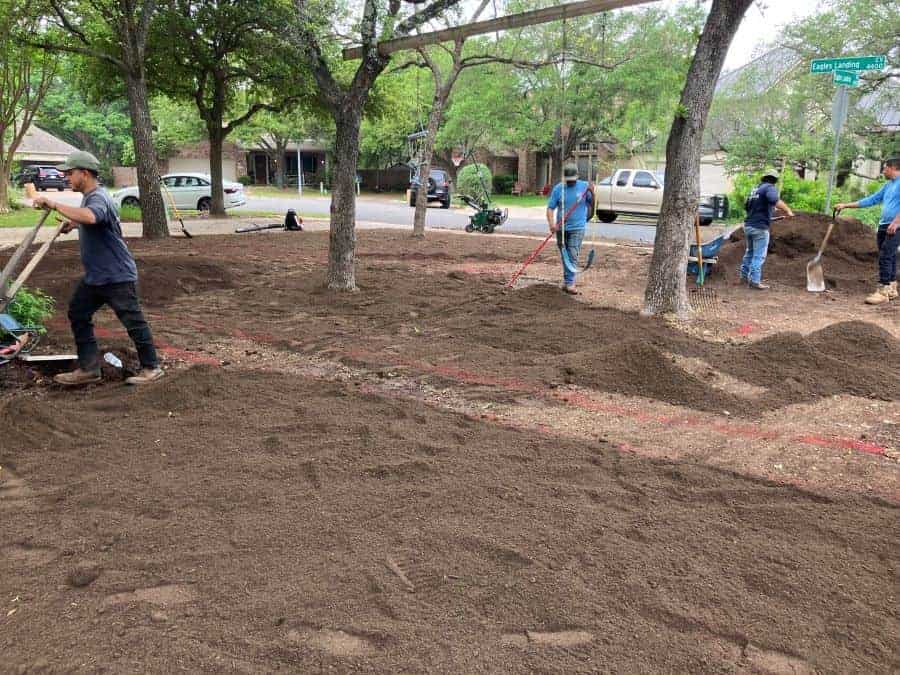Travis Country Water-Wise Front Yard Transformation
Priorities: – Water Conservation – Elderly-Accessible Design – Stormwater Management – Native Plant Integration
Challenges: – Large Turf Area Removal – Drainage Issues – Accessibility Needs – Site Topography
Solutions: – Strategic Water Management – Accessible Pathways – Native Plant Selection – Functional Hardscaping
This residential transformation centered on two key objectives: creating a water-conscious landscape and ensuring accessibility for the elderly homeowner. The project qualified for the City of Austin’s WaterWise Landscape Rebate Program, demonstrating its alignment with local conservation initiatives.
The first major task involved removing 1,200 square feet of traditional turf, replacing it with a thoughtfully designed landscape that manages water more effectively. A carefully engineered swale system now captures and redirects water from downspouts, while strategically placed berms add visual interest and create optimal planting conditions.

Accessibility was paramount in the design. We installed a stabilized granite pathway, providing a secure route from the seating patio to the yard’s corner. This surface offers reliable footing while maintaining the natural aesthetic of the space.
To enhance the landscape’s functionality and visual appeal, we incorporated multiple hardscape elements. Custom steel edging creates a clean transition between the remaining grass and the transformed area. Carefully placed boulders serve dual purposes – as informal seating and as artistic elements that ground the design.

A dry creek bed serves as both a decorative feature and a functional drainage solution, directing water flow toward the side yard. The addition of juniper log edging around the mulched play area creates a natural boundary while complementing the overall design aesthetic.
The planting plan focused on shade-tolerant native species, selected for their ability to thrive in local conditions while requiring minimal water. These plants, combined with proper soil preparation and mulching, create a sustainable landscape that will mature beautifully while conserving water resources.

This transformation demonstrates how functional needs – water conservation, accessibility, and stormwater management – can be met while creating an aesthetically pleasing, sustainable landscape that serves both the homeowner and the environment.

